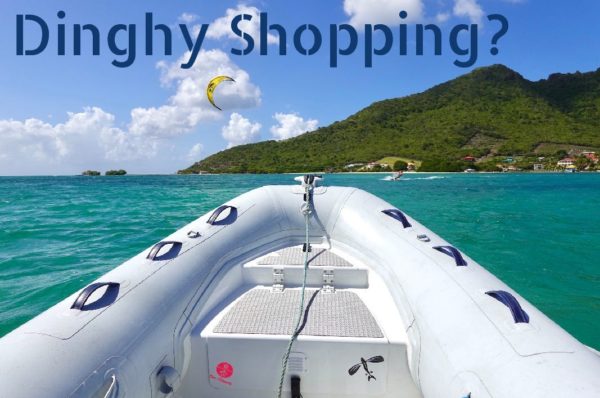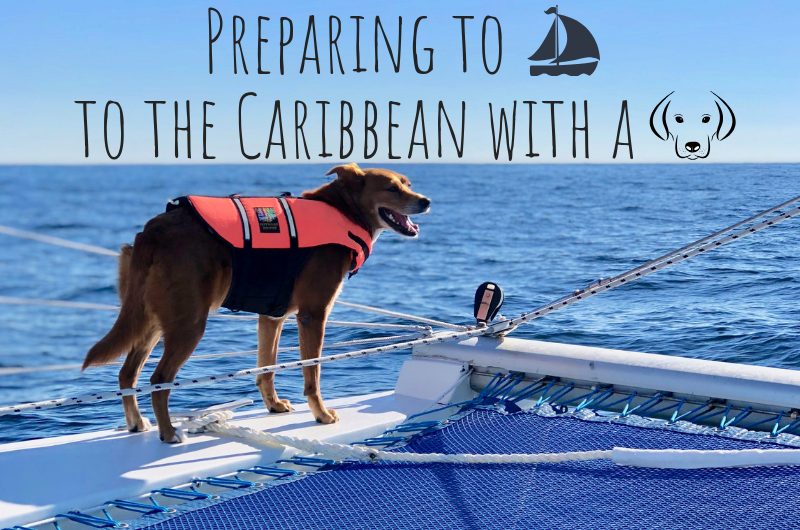In the past year we have owned three different kinds of inflatable dinghies. Your personal preferences and budget will ultimately determine the dinghy you will need, but here are the top 5 things you should consider when choosing your best option:
1. Size
The size of your inflatable dinghy is totally up to personal preference. Some questions you should ask yourself are:
- Are you going long distances or are you just planning on using it to go to shore?
- How much carrying capacity do you need?
- Do you plan to use it for recreational activities and fish off the dinghy?
The bigger you go, the more carrying capacity you have. We went bigger because we go fishing, we bring our dog everywhere and travel long distances. If you choose a smaller option, it may be lighter and easier to pull up on the boat or the beach – but remember you won’t have as much room! If you are on a budget, the smaller options are cheaper, which brings us to our next category: materials.
2. Material
So when we mention materials, we are talking about two things:
- The tube material
- The hull material
Inflatable Dinghy Tube Material
There are two types of tube material which are Hypalon and PVC. Hypalon is going to be more expensive, but handles the sun better than PVC does. If you are considering cruising in your dingy long-term, I’d choose Hypalon. If you are using your dinghy seasonally in areas where the sun isn’t as strong, I’d choose PVC. Hint: Regularly cover PVC to make your material last longer!
Hull Material
There are a few different types of hull materials to consider and each has its own strengths and weaknesses. We have owned three different types:
- The Aluminum Hull
-
- An aluminum hull is what we currently have. We love that it is very lightweight, but still holds strength. The aluminum handles rough terrain well, so puncturing your bottom is highly unlikely compared to other options. If you do need a repair, most times you have to seek welding work.
- The Fiberglass Hull
- A Fiberglass hull is much heavier than aluminum, but is an easier repair because you will most likely have the correct supplies to do so versus seeking the welding work you would need for aluminum bottoms.
- The Inflatable Hull
-
- The inflatable hull can range from feeling like you are stepping on a water bed to feeling rigid, if you add slats. Before you purchase an inflatable bottom, consider the terrain you will be pulling your dinghy into. For example, if you pull up on a beach with rocks or barnacles, your floor could pop very easily!
3. Dinghy Weight
Weight is a combination of a few things: material, size and features you have on the inflatable dinghy. Solid fiberglass is probably going to be your heaviest boat, depending on your size and features, compared to aluminum and inflatable.
Weight is very important for us because the lighter the inflatable dinghy is, the easier it is to lift onto our boat. If you have a crane system that lifts your dinghy, then it doesn’t matter much!
4. Features
The more features you have, generally the heavier the dinghy. Dinghy features can range from a seat to fancy electronics. We went pretty simple because we like to keep our dinghy as light as possible.
Some features to look for in a dinghy are:
- D rings/locks for boat towing
- Bench seat
- Vented locker for the gas tank
- Anchor locker with a slot for the line to come out
- Non-skid material on the floor
- A steering console with wheel, throttle, etc.
#5 – SHAPE
When we say shape, we mostly mean the hull shape. The wider the hull, the more stable your dinghy will be. The deeper the V you have in the hull, the easier it will be to navigate and slice through choppy waters.
We hope this list helps. If we missed anything important, let us know!




